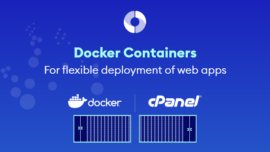This comprehensive guide provides valuable tips to improve Magento website speed, helping you to enhance performance and deliver a seamless user experience to your customers.
Magento is a popular e-commerce platform used by many online retailers around the world. It offers a wide range of features and functionalities that can help businesses to sell their products and services online.
However, one of the most common issues with Magento is its slow page loading times, which can negatively impact the user experience and ultimately lead to lower conversion rates.
In this article, we will discuss some tips and techniques for optimizing your Magento server to improve its performance and speed up your website, so let’s get started!
- Use a Content Delivery Network (CDN)
A Content Delivery Network (CDN) is a network of servers that are distributed across the globe, with the aim of delivering web content faster to users based on their geographical location.
By using a CDN, you can reduce the time it takes for your website to load by caching and serving static content, such as images and videos, from a server that is closer to your users.
- Enable Magento caching
Magento has a built-in caching system that can help to speed up your website. By enabling caching, you can reduce the number of database queries and improve the performance of your website.
You can enable caching by going to the Magento admin panel, selecting System > Cache Management, and then selecting all the cache types that you want to enable.
- Optimize your database
The performance of your Magento website is heavily dependent on the performance of your database.
You can improve the performance of your database by optimizing it, which involves cleaning up unnecessary data and ensuring that your database tables are properly indexed.
You can also use tools like MySQL Tuner to check your database server configurations and options on improving them.
- Minimize HTTP requests
Each time a user loads your website, their browser makes multiple HTTP requests to fetch various resources, such as images, scripts, and stylesheets.
Minimizing the number of HTTP requests can significantly reduce the load time of your website. You can achieve this by combining multiple scripts and stylesheets into a single file, optimizing images, and using a CDN to serve static content.
- Use a dedicated or cloud server
If you have a high-traffic Magento website, you may need to upgrade your server to a more powerful one to handle the load.
You can consider using a dedicated server or a cloud hosting solution that offers high-performance servers with better processing power, memory, and storage.
While using a Dedicated or Cloud Server can provide more control and flexibility compared to shared hosting, it’s not enough to ensure optimal Magento hosting performance, as a magento server optimization is also required to ensure that the server is properly configured and tuned for optimal speed, security, and stability.
- Keep the number of extensions low
Keeping the number of extensions to a minimum can also have a significant impact on the performance of your Magento server.
While extensions can add functionality to your website, they can also add extra code that needs to be loaded and executed, which can increase the PHP runtime and slow down your website.
Therefore, it’s important to only install the necessary extensions and ensure that they are well-coded and optimized to minimize their impact on your website’s performance. By keeping the number of extensions to a minimum, you can improve the speed and stability of your website and provide a better user experience for your customers.
- Redis Memory Caching
Redis is an in-memory data structure store that can be used to improve the performance of a Magento website. By caching frequently accessed data, such as database queries and session data, Redis can significantly reduce the number of requests that need to be made to the server, resulting in faster page load times and improved overall performance.
In addition, Redis is designed to handle a high volume of requests, making it an ideal solution for high-traffic Magento websites.
By using Redis as a caching mechanism, online retailers can improve the speed and responsiveness of their Magento website, providing a better user experience for their customers.
Conclusion on Tips To Improve Your Magento Website Speed
Properly configuring your Magento store and the server hosting it are two crucial steps for improving your store’s speed. By following the tips and techniques outlined in this article, you can minimize page loading times, reduce bounce rates, and increase conversion rates.
Although several factors can impact server performance, optimizing your server proactively can significantly improve the e-commerce experience of your customers by delivering a fast and reliable online shopping experience.
